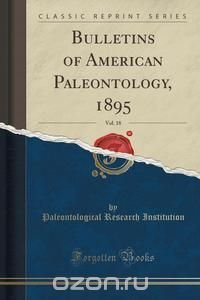Excerpt from Bulletins of American Paleontology, 1895, Vol. 18
The pioneer work of the territorial surveys, and the early activities of the United States Geological Survey, brought to light a great series of non-marine Mollusca from the Upper Cretaceous and Lower Tertiary rocks of the western states. This material, studied principally by F. B. Meek and C. A. White, was described in a number of government reports. The most valuable of these is White's "Review of the Non-marine Fossil Mollusca of North America". Palaeontologists of later years, however, have shown little interest in these continental mollusks, apparently because of the long geological range, as well as the marked variability, of many species.
Meanwhile, the succession of Tertiary formations in the west has become much better understood than in the days of Meek and White, largely as a result of the systematic study of mammalian faunas. Various field parties of the American Museum of Natural History, while engaged in collecting remains of mammals, obtained a large number of fossil shells, mostly from the lower Tertiary rocks of Wyoming and New Mexico. This material was described by Professor T. D. A. Cockerell, between 1912 and 1915, in the Bulletin of the American Museum of Natural History. Cockerell's studies revealed the presence of a rich and interesting molluscan fauna in the lower Tertiary rocks of northwestern Wyoming. However, as the stratigraphy of the sediments was not clearly understood at that time, much of the historical significance of the fossils could not be recognized.
More recently the Princeton University Scott Fund expeditions have entered north-western Wyoming, and in the field seasons of 1927, 1928 and 1929 Professor W. J. Sinclair and Dr. G. L. Jepsen, of Princeton University, obtained, besides rich vertebrate collections, an important series of fossil Mollusca. These shells were turned over to the writer for study, and the results form the subject of the present paper.
About the Publisher
Forgotten Books publishes hundreds of thousands of rare and classic books. Find more at www.forgottenbooks.com
This book is a reproduction of an important historical work. Forgotten Books uses state-of-the-art technology to digitally reconstruct the work, preserving the original format whilst repairing imperfections present in the aged copy. In rare cases, an imperfection in the original, such as a blemish or missing page, may be replicated in our edition. We do, however, repair the vast majority of imperfections successfully; any imperfections that remain are intentionally left to preserve the state of such historical works. Это и многое другое вы найдете в книге Bulletins of American Paleontology, 1895, Vol. 18 (Classic Reprint) (Paleontological Research Institution)
